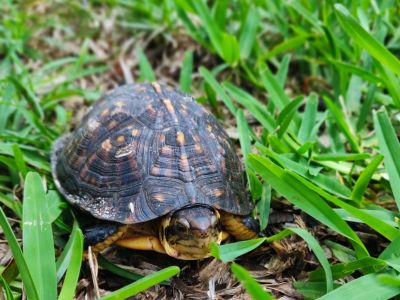How to Attract Turtles
From an aquatic turtle’s point of view, the ideal garden pond has lots of plants and insects for food, as well as structural features such as small coves along the edge of the pond and rock piles for climbing and hiding. Dig shallow coves with a shovel to create micro-environments that will shelter turtles in garden ponds. Use rocks of varying size to build piles with crevices. Lush vegetation in and around the pond is sure to attract turtles. Plants provide shade, shelter and food. They also attract insects, which are an important source of protein in the turtle’s diet. Preferences depend on the species. Plant a variety so you’ll be sure to have something for everyone. Box turtles, one of the more common North American turtles, like to spend their time in shady areas with plenty of leaf litter on the ground. They sleep under leaf litter at night and tunnel around in it during the day. These omnivores eat a wide range of plants and insects and seem particularly fond of slugs. Complete your box turtle garden by providing a small bog or moist area where they can cool off during the heat of the day. If you want box turtles to remain in the garden year round, provide a place for them to hibernate from October until the soil warms in spring. They like to tunnel under a small brush pile when the weather turns cold. In summer they need an open, sunny area for egg laying. Avoid using herbicides and insecticides in your outdoor turtle garden. Organic gardening practices lead to healthy turtles, and, in turn, they’ll help keep the insects and weeds under control.
